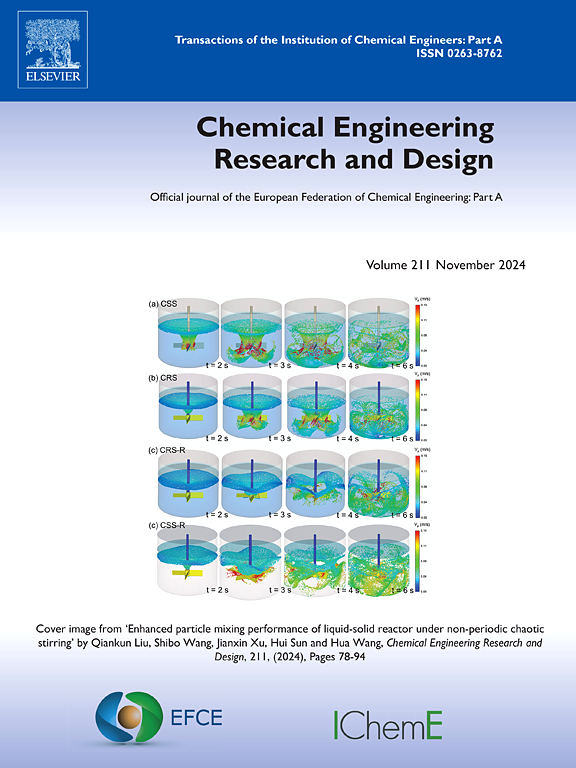The effect of green hydrogen feed rate variations on e-methanol synthesis by dynamic simulation
IF 3.7
3区 工程技术
Q2 ENGINEERING, CHEMICAL
引用次数: 0
Abstract
Methanol is a promising fuel and important intermediate chemical in the transformation of renewable power to chemical products since it can be directly synthesized from captured CO2 and electrolytic H2. However, the intermittency of renewable power generation poses challenges to green methanol production process design and operation, necessitating high operational flexibility to facilitate coupling with intermittent renewable power. In this study, a green crude methanol (a mixture of methanol and water from methanol synthesis) production process was dynamically modeled. The results show that the minimum load of the model is 20 %, with maximum allowable ramping rates of 3.25 %/minute for ramp-down and 2.10 %/minute for ramp-up between full and minimum load. The introduction of a standby mode, in which a make-up H2 stream is supplied when electrolytic H2 is unavailable, allows continuous operation of the process at the minimum load. With the constructed control structure, the model demonstrates that the process can effectively handle continuous variations of electrolytic H2 input.
动态模拟绿色氢气进料速率变化对电子甲醇合成的影响
甲醇是一种前景广阔的燃料,也是将可再生能源转化为化工产品的重要中间化学品,因为它可以直接从捕获的二氧化碳和电解氢气中合成。然而,可再生能源发电的间歇性给绿色甲醇生产工艺的设计和操作带来了挑战,需要较高的操作灵活性,以促进与间歇性可再生能源发电的耦合。本研究对绿色粗甲醇(甲醇合成过程中产生的甲醇和水的混合物)生产过程进行了动态建模。结果表明,模型的最小负荷为 20%,在满负荷和最小负荷之间的最大允许斜率为:斜率下降 3.25%/分钟,斜率上升 2.10%/分钟。由于引入了待机模式,即在电解 H2 不可用时提供补充 H2 流,因此该工艺可在最低负荷下连续运行。通过所构建的控制结构,该模型表明该工艺可有效处理电解 H2 输入的连续变化。
本文章由计算机程序翻译,如有差异,请以英文原文为准。
求助全文
约1分钟内获得全文
求助全文
来源期刊

Chemical Engineering Research & Design
工程技术-工程:化工
CiteScore
6.10
自引率
7.70%
发文量
623
审稿时长
42 days
期刊介绍:
ChERD aims to be the principal international journal for publication of high quality, original papers in chemical engineering.
Papers showing how research results can be used in chemical engineering design, and accounts of experimental or theoretical research work bringing new perspectives to established principles, highlighting unsolved problems or indicating directions for future research, are particularly welcome. Contributions that deal with new developments in plant or processes and that can be given quantitative expression are encouraged. The journal is especially interested in papers that extend the boundaries of traditional chemical engineering.
 求助内容:
求助内容: 应助结果提醒方式:
应助结果提醒方式:


